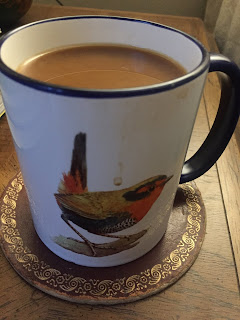The cardboard box stood in the open doorway of the
downtown shop. I peered in. A box of live tortoises. I entered the shop that
was lined with burlap bags of lentils, dry beans, chick peas, corn and other
grains.
“Are
the tortoises for sale?” I asked. My youngest son, Nicky, would soon be
celebrating his sixth birthday. I thought he’d like a pet.
They all looked the same,
so I reached into the box and pulled one out. The shopkeeper put him in a small
box, tied it with string and poked holes in the top. I carried the box carefully,
boarded the metro and arrived home with our new pet.
Nicky
loved the tortoise and named him “Speedy Gonzalez” because on warm days his
tortoise walked around the garden at an unexpected pace. We tried different
foods with Speedy: ripe bananas, apricots, plums, cherries and leaves and grass
in the garden. If he didn’t like something he simply plowed over it like an
army tank.
Speedy lived year round in
our walled backyard until one very rainy day, I found him floundering in a
puddle, head submerged. We wondered if we shouldn’t leave him outside in this
weather. We bought a small book about tortoises. They needed to hibernate in a
dark indoor place once outdoor temperatures reached lower than ten degrees.
The next fall we placed
him in a low cardboard box with a layer of soil in the toolshed. In late spring,
when he began to move around, we took him outside in the daytime and returned
him to his box on cooler nights.
The years passed by.
Nicky, now called Nico, graduated from the university and took a job as a guide
in Patagonia. I took over turtle care, though Speedy never required much care.
We kept an eye on him in hot weather as he’d sneak into our bedroom and squeeze
under a radiator. He loved dark corners. Summer nights he’d find a spot to
sleep behind a flower pot, or beside a thick bougainvillea trunk or tucked into
a hole he’d carved out. His favorite season is apricot season, when he gorges
on the fallen fruit.

After Nico moved on to
studies and jobs overseas, I became the official tortoise caretaker. One year,
I noticed that Speedy was not his usual tortoise self, less active and eating
little. After a few phone calls, I located Francisca, a veterinarian who
specialized in tortoises. She informed us that Speedy is a chelonoidis chilensis, but that, in spite of his scientific name,
he comes from Argentina. She examined, weighed him, checked inside
his mouth and sent me to the other end of town to have him x-rayed. A tortoise
x-ray! Results: Speedy had pneumonia and was underweight. Since he wouldn’t eat
on his own, we had to feed him special tortoise food, vitamins and antibiotics with
a syringe and we couldn’t let him hibernate. We set up a home-made tortoise
terrarium: a large clear plastic box with a lamp, a heating element, a
thermometer and lined with shredded paper. But Speedy still wanted to
hibernate.

I picked him up and looked
into his eyes. “No, Speedy! You can’t sleep! You must eat.”
Feeding him was a slow,
two-person ordeal. First measure the food into a syringe. Then I’d say to the
day’s designated helper (the cleaning lady or my husband) “I’ll hold his neck
and open his mouth and you drop in the food.” I’d grab at his squiggly neck but
he’d whisk back into his shell. After a tug of war (he has the strength of an
ox), I’d manage to pry open is jaw.
I told the vet, “This is a struggle.”
“Try relaxing him, petting
him,” she said.
Okay. I can do that.
If it was too much food,
it oozed out of his nose. We’d wait several minutes for him to swallow before
repeating the procedure. This process took about half an hour. We did this
daily for two winters. Eventually, Speedy became more cooperative and he and I even
developed a bond of sorts. Then one spring he finally returned to his normal
tortoise behavior.
But this past summer, I
noted that once more he was not well. Even the apricots didn’t tempt him. Back
to the vet. Blood tests. Antibiotics and vitamins. A kidney problem. Hand
feeding again.
Nico has moved back to Chile with his wife and now has
a daughter. When I tell him how stressful tortoise feeding has become, he
decides it’s time for him to take over care of his tortoise. The vet suggests
that to facilitate the feeding, she’ll attach a plastic tube to his shell and
insert the other end into a small hole in his neck.
This costly surgery
requires anesthesia. Nico takes Speedy to his house that has a good size walled
in garden. But feeding with the tube does not go well. One day as Speedy roamed
the garden, the tube came out.
Yet, the treatment was effective.
Speedy has
become more active in the summer sun and developed an appetite. He’s eating
apricots, mangos, peaches and the all-time favorite, figs. Now it is fall and
he recently has chosen to hibernate, staying active way longer than he ever did
in all the years at our house.
People ask: how old is
Speedy? Speedy has been in the family for over 35 years. How old he was when we
bought him is a mystery. The family’s
two dogs have accepted this reptile into their outdoor territory. And Nico’s
two-year-old daughter, Mila, is enjoying getting to know Speedy.
I miss saying good morning
to Speedy in our yard after so many years but I’m pleased that he is thriving
in his new home.















